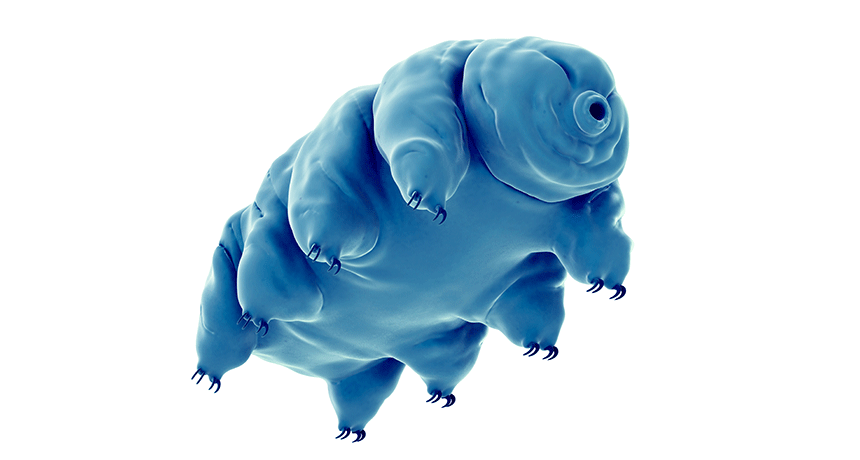This tiny animal is apocalypse-proof
Asteroids or exploding stars won’t wipe out microscopic critters called tardigrades

They may look like chubby microscopic caterpillars, but water bears are no joke. These creatures will probably live long after humans are gone.
Eraxion/istockphoto
Water bears might end up being the last animals on Earth.
Also known as tardigrades, these microscopic creatures are tough. A new study concludes that they could survive until — several billion years from now — the sun boils Earth’s oceans away.
That’s good news for anyone hoping Earthlings may have company in the universe. If these critters can live through such extreme conditions on our planet, it suggests life might exist in other seemingly inhospitable places.
Other studies had looked at threats to people from space. They focused on such things as asteroids striking Earth, neighboring stars going supernova or huge explosions called gamma-ray bursts. But for the new study, researchers ignored fragile humans. They wanted to know what it would take to wipe out one of the world’s ultimate survivors.
So they turned to tardigrades.
The microscopic critters live all around they world. And they are hardy. Decades without food or water? No problem. Temperatures plummeting to –272° Celsius (–460° Fahrenheit) or skyrocketing to 150 °C (300 °F)? Bring it on. Even the crushing pressure of deep seas doesn’t bother them. Nor does the vacuum of outer space or exposure to extreme radiation.
Water bears are so sturdy that even a nuclear war probably wouldn’t kill them. Neither would global warming nor any astronomical events that wreak havoc on Earth’s atmosphere. But all of these scenarios could doom humans, notes Avi Loeb. He’s an astrophysicist at Harvard University in Cambridge, Mass.
To exterminate tardigrades, something would have to boil the oceans away. (No more water means no more water bears.) So Loeb and his colleagues calculated just how big an asteroid, how strong a supernova, or how powerful a gamma-ray burst would have to be to heat Earth’s oceans that much.
“They actually ran the numbers on everyone’s favorite natural doomsday weapons,” says Seth Shostak. He’s an astronomer at the SETI Institute in Mountain View, Calif. (One of the SETI Institute’s goals is to search for alien life.)
Loeb’s team found that there are only 19 asteroids in the solar system massive enough to wipe out water bears. None are on a collision course with Earth.
A supernova — the explosion of a massive star after it burns through its fuel — would have to take place within 0.13 light-year of Earth. Yet the closest star big enough to go supernova is nearly 147 light-years away.
Then there are gamma-ray bursts. These explosions are thought to come from especially powerful supernovas or colliding stars. They’re also extremely rare. Over a billion years, there’s only about 1 chance in 3 billion of a gamma-ray burst killing off tardigrades, the researchers calculated.
Loeb and his colleagues published their results July 14 in Scientific Reports.
“Makes me wish I were an extremophile like a tardigrade,” says Edward Guinan. He’s an astrophysicist at Villanova University in Pennsylvania who was not involved in the work. An extremophile is a life form that can survive in harsh environments.
But even tardigrades can’t cheat death forever. In the next seven billion years, the sun will swell into a red giant star. It might engulf Earth, and it will surely sizzle away Earth’s water.
Until then, tardigrades can probably resist any other potential apocalypse. This is exciting to researchers who hope that if there’s life elsewhere in the universe, it lasts long enough for us to find it. Notes Shostak, “Life is tough, once it gets going.”







